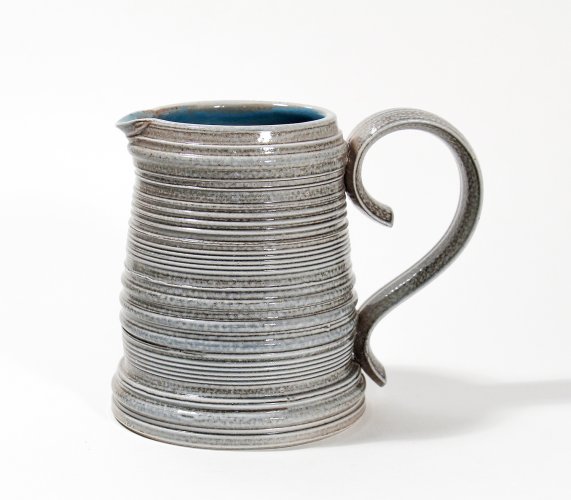Peter Black makes salt glazed porcelain and stoneware, thrown and finished on the wheel, sometimes altered and assembled, including functional as well as one-off decorative or sculptural pieces.

Adding a variety of banding rings to the work evokes the marks of turning, the softness and spinning of the clay on the wheel, revealing the story of its making. The banding profiles are mostly influenced by architectural detail on buildings Peter has visited over the years, but the effect of the banding they create on the pots he finds particularly rewarding, suggesting on the one hand support, protection, safety and security, but at other times perhaps a constraint, confinement or caging.
In his youth Peter collected (mainly damaged) Chinese Kangxi and 18C European porcelain, the style and shapes of which has informed the choice of form in his own work. These pots have of course been themselves influenced by earlier ceramic, silver and pewter forms.
Peter's work focuses on the familiar, taking it forward with a dash of humour and an oblique nod to its source. At its best he feels this approach produces freshness and vibrancy, and the everyday can become something unique and individual, with its own character. Peter is most happy with a finished piece that makes him smile, that might be an old friend and that he finds himself seeking out.
The making process
Using principally Ming porcelain or Steve Harrison stoneware, the pot form is thrown before Peter uses profile tools he has made to add the banding and finishing throwing the pot. Pots are generally finished on the wheel, sometimes the foot is turned. Pots on a plinth are assembled from three components thrown on the wheel; tall pots are thrown in sections and attached on the wheel.
Peter make his profile tools using hardwood and a round or square file.
Handles are either pulled or extruded using wooden die shapes Peter makes out of plywood.
Pots are bisque fired, lined with a variety of glazes (shino, clear, or dolomite matt) and then sprayed with a slip containing a mix of oxides.
The pots are fired in a salt kiln, working to a 10 hour firing to cone 10/11, reduction commences at 1000C, and approximately 12kg of salt introduced gradually via a funnel at around 1250C.